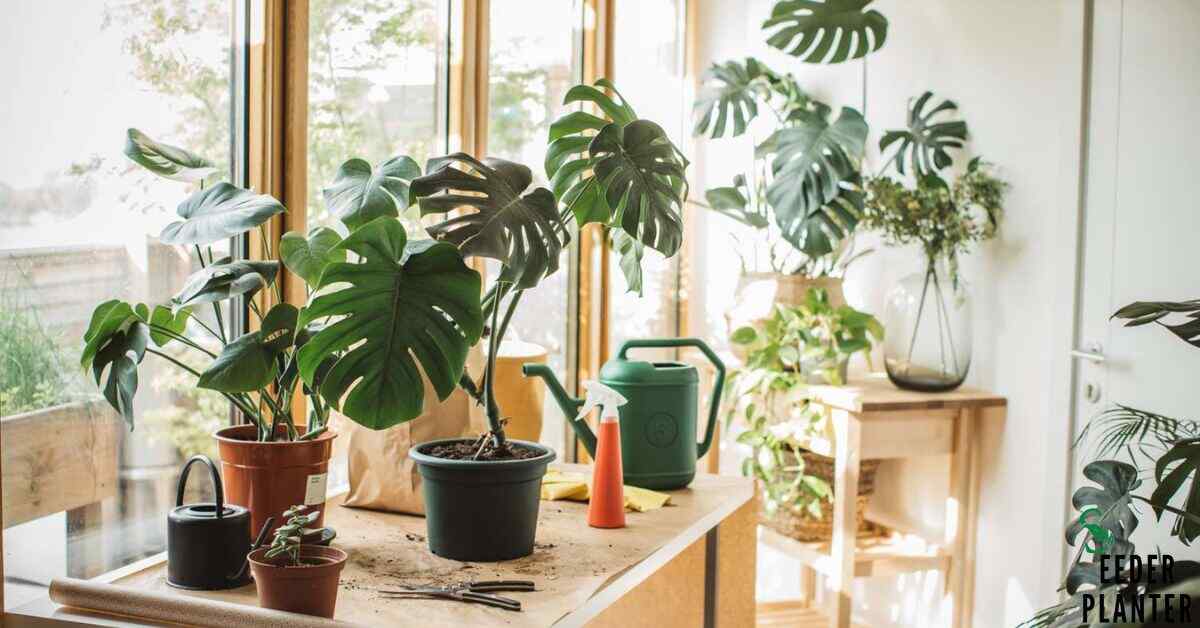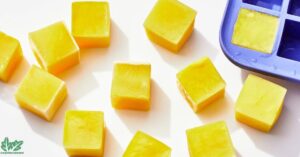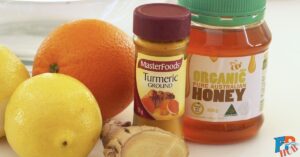Creating the right soil mix for Monstera plants is crucial for their survival and growth. Many Monstera owners struggle with yellowing leaves, stunted growth, and root rot due to incorrect soil composition. These issues often lead to plant death, wasting both time and money invested in these beautiful tropical plants.
This comprehensive guide provides exact recipes and steps to create the perfect Monstera soil mix. You’ll learn the essential components, correct ratios, and proper maintenance techniques.
Whether you’re a new plant parent or experienced grower, these tested soil mix recipes will help your Monstera thrive with robust growth and healthy foliage.
Understanding Monstera Plant Needs
Monstera plants grow naturally in tropical rainforests of Central and South America. In their native habitat, they thrive in loose, organic-rich soil that drains well.
A proper monstera soil mix recipe must replicate these natural conditions. The soil needs to be airy, rich in nutrients, and able to maintain consistent moisture without becoming waterlogged.
Natural Habitat and Soil Requirements
In rainforests, Monstera roots grow in decomposed organic matter and loose soil. This environment provides perfect drainage while retaining essential nutrients.
The natural soil contains fallen leaves, bark, and other organic materials. Creating a monstera soil mix recipe that matches these conditions helps your plant develop a strong root system and healthy growth.
Why Soil Mix Matters for Monstera Growth
The right soil mix directly affects your Monstera’s health and growth rate. Poor soil leads to root problems, nutrient deficiencies, and weak plants.
A proper monstera soil mix recipe prevents these issues by providing the perfect balance of moisture, air, and nutrients. Good soil supports root development and helps prevent common problems like root rot.
Essential Components of Monstera Soil Mix
The best soil mix combines three main elements: organic matter, drainage materials, and moisture-retaining components.
Each ingredient in a monstera soil mix recipe serves a specific purpose. Standard potting soil provides nutrients, perlite creates air pockets, and peat moss or coco coir holds moisture.
Base Materials
Quality potting soil forms the foundation of any monstera soil mix recipe. Choose an organic potting mix without artificial fertilizers. This base material provides nutrients and structure for your plant’s roots. Fresh potting soil ensures your Monstera has access to essential nutrients for healthy growth.
Drainage Materials
Perlite and orchid bark are crucial drainage materials for Monstera plants. They create air pockets in the soil, preventing water from pooling around roots. A good monstera soil mix recipe includes 30-40% drainage materials. These components help oxygen reach the roots and prevent root rot.
Moisture-Retaining Elements
Peat moss or coco coir helps maintain consistent soil moisture. These materials slowly release water to plant roots while preventing oversaturation.
The perfect monstera soil mix recipe includes 20-30% moisture-retaining elements. They create the ideal balance between wet and dry conditions.
The Perfect Monstera Soil Mix Recipe
Mix 40% potting soil, 30% orchid bark, 20% peat moss, and 10% perlite for optimal results. This monstera soil mix recipe works for most growing conditions.
Combine ingredients thoroughly before use. This mix provides excellent drainage while retaining enough moisture for healthy growth.
Basic Recipe Ratio
The standard monstera soil mix recipe uses a 4:3:2:1 ratio. This means four parts potting soil, three parts orchid bark, two parts peat moss, and one part perlite.
This combination creates ideal growing conditions. Adjust these ratios slightly based on your local climate and watering habits.
Alternative Mix Variations
For humid areas, increase drainage materials in your monstera soil mix recipe. Use 35% potting soil, 35% orchid bark, 20% perlite, and 10% peat moss.
In dry climates, add more moisture-retaining elements. These adjustments help your plant thrive in different environments.
Seasonal Soil Care for Monstera
Your monstera soil mix recipe needs adjustments throughout the year. Plants grow actively in spring and summer, requiring more nutrients.
In fall and winter, they need less water and fertilizer. Regular soil checks help maintain proper moisture levels. Seasonal care ensures your Monstera stays healthy year-round.
Summer Soil Maintenance
During summer, monitor your monstera soil mix recipe closely. The soil dries faster in warm weather. Water more frequently but ensure good drainage.
Add fertilizer every 4-6 weeks during this growing season. Check moisture levels every 2-3 days. Keep soil consistently moist but never soggy.
Winter Soil Adjustments
Reduce watering frequency in winter. Your monstera soil mix recipe should stay slightly drier during cold months. Stop fertilizing until spring.
Check soil moisture weekly instead of daily. Move plants away from cold drafts and heating vents. Winter adjustments prevent root problems during dormancy.
Troubleshooting Common Soil Issues
Watch for signs that your monstera soil mix recipe isn’t working. Yellow leaves often indicate overwatering. Brown leaf edges suggest underwatering.
Root rot develops in soggy soil. Address problems quickly by adjusting watering habits or repotting. Most soil issues are fixable if caught early.
Signs of Poor Soil Quality
Poor drainage in your monstera soil mix recipe causes several problems. Look for water pooling on soil surface, mold growth, or musty smells.
Slow growth and wilting leaves indicate compacted soil. Root rot shows as soft, brown roots. These signs mean immediate soil changes are needed.
Solutions and Remedies
Fix soil problems by adjusting your monstera soil mix recipe. Add more perlite for better drainage. Replace compacted soil with fresh mix. Trim rotted roots before repotting. Improve air circulation around plants. Use clean tools and pots to prevent disease spread.
DIY vs. Pre-Made Soil Mixes
Creating your own monstera soil mix recipe saves money and allows customization. Pre-made mixes offer convenience but cost more. DIY mixes typically cost $15-20 for materials making several batches. Store-bought specialty mixes range from $20-30 per bag.
Cost Comparison
A DIY monstera soil mix recipe costs about $3-4 per plant. Pre-made mixes cost $8-10 per plant. Basic ingredients last for multiple plants.
Buying in bulk reduces costs further. Calculate needs based on pot sizes. Consider long-term savings versus convenience.
Quality Considerations
Commercial monstera soil mix recipes ensure consistent quality. DIY mixes let you control ingredients and adjust ratios.
Both options work well when properly prepared. Choose based on your time, budget, and comfort level. Quality matters more than source for plant health.
Soil Testing and Maintenance
Regular testing helps maintain your monstera soil mix recipe quality. Check soil condition monthly. Look for signs of compaction, salt buildup, or nutrient depletion.
Simple soil tests from garden stores provide valuable information. Test results guide adjustments to watering and fertilizing schedules. Good maintenance extends the life of your soil mix.
pH Testing
Test your monstera soil mix recipe pH every 3-4 months. Ideal pH ranges from 5.5 to 7.0. Use a basic soil pH meter or test strips. Adjust high pH with sulfur or peat moss.
Raise low pH with agricultural lime. Proper pH ensures nutrients remain available to roots. Most garden centers sell affordable pH testing kits.
Read This Blog: Protein for Breakfast: Powering Your Day with Essential Nutrients
Nutrient Levels
Monitor nutrients in your monstera soil mix recipe regularly. Nitrogen promotes leaf growth. Phosphorus supports root development. Potassium strengthens overall plant health.
Add organic fertilizer when leaves pale or growth slows. Slow-release fertilizers last 3-4 months. Test soil before adding more nutrients.
Repotting and Soil Replacement
Replace your monstera soil mix recipe every 18-24 months. Soil breaks down over time, losing structure and nutrients.
Repot when roots fill current container. Choose pots 2-3 inches larger than current size. Fresh soil promotes healthy growth and prevents root problems.
Also Read This Blog: Juicing Recipes for Inflammation: Your Ultimate Guide to Natural Relief
When to Repot
Check if your monstera soil mix recipe needs replacement. Signs include: roots growing through drainage holes, slow water absorption, or stunted growth. Spring and early summer are best for repotting. Avoid repotting in winter when plants grow slowly. Most Monsteras need repotting every 2-3 years.
Repotting Process
Prepare fresh monstera soil mix recipe before starting. Remove plant carefully from old pot. Clean roots gently and trim damaged sections. Fill new pot with 2 inches of soil mix. Center plant and add soil around roots. Water thoroughly after repotting. Keep plant in indirect light for two weeks.
Frequently Asked Question
Can I use orchid soil for monstera?
Yes, orchid soil can be used as part of a monstera soil mix. Mix it 50/50 with regular potting soil for best results.
Is Loam Soil Good For Monsteras?
Loam soil is suitable but needs amendments. Mix with perlite and peat moss for better drainage and aeration.
Can I Use Cactus Soil For Monsteras?
Cactus soil alone is too dry. Blend with regular potting soil and peat moss for proper moisture retention.
Is charcoal good for Monsteras?
Yes, activated charcoal benefits monstera soil. It purifies soil and prevents bacterial growth.
Is vermiculite good for Monstera?
Yes, vermiculite improves soil structure. Use 10-15% in your mix to enhance moisture retention.
How often should I replace the soil?
Replace monstera soil every 18-24 months. Repot sooner if soil becomes compacted or drains poorly.
Can I reuse old monstera soil?
Not recommended. Old soil lacks nutrients and may contain pathogens. Always use fresh soil when repotting.
Conclusion
Creating the perfect soil mix transforms your Monstera’s growth potential. The right combination of materials ensures strong roots, healthy leaves, and consistent growth.
Regular maintenance and timely repotting keep your plant thriving. Remember to adjust the mix based on your local climate and growing conditions. Your Monstera will reward proper soil care with stunning foliage and robust growth.











